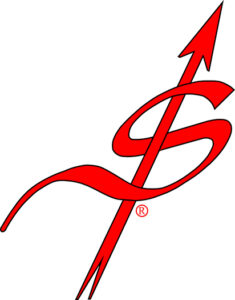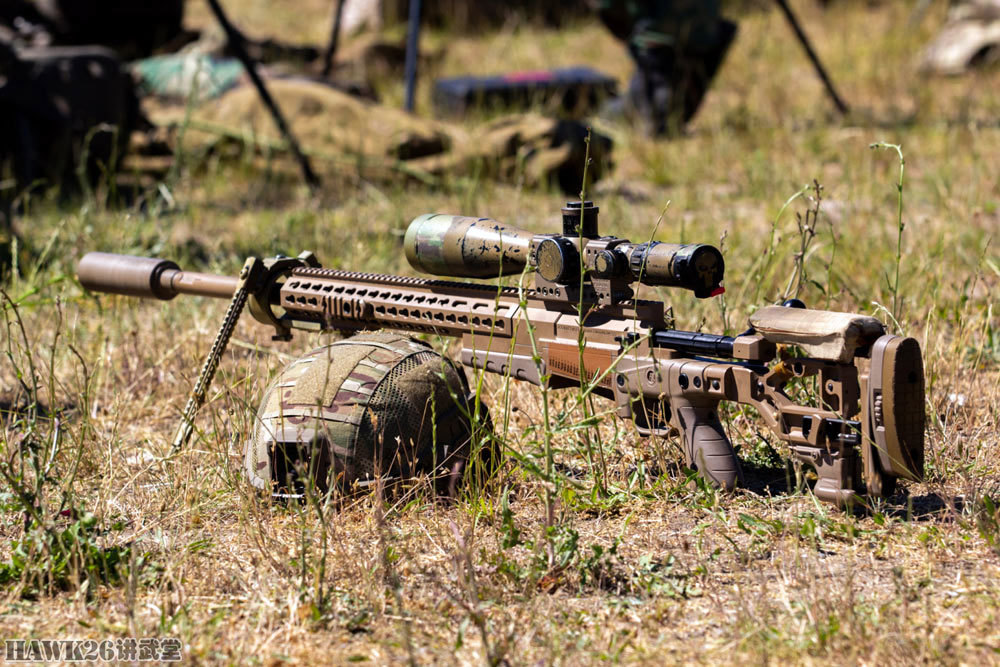
ARMY SNIPER ASSOCIATION
ARMY SNIPER HISTORY

It remains unclear who coined the term “sniper,” but it likely came from “snipe shooting.” One story tells that the snipe was a small, fast-flying game bird found in the marshes of England and Scotland. The snipe was known for its agility and twisted flight, each of which make it very difficult to shoot. In the era of flintlock fowling guns, it was considered quite an accomplishment to bring down the snipe.
The term sniper may have originated from the British occupation of India in the 1800s. The story is that soldiers hunted the snipe in British-controlled India. During the 1800s, “sniper” was used to describe a skillful hunter with the ability to stalk and be a first-rate shot.
Snipe shooting was a good trial of the gunner’s skill, who often engaged in this diversion without the assistance of a dog of any kind; a steady pointer, however, is a good companion. [Sportsman’s Calendar, London, December 1818]
The sniper was a “sharpshooter; one who shoots from a hidden place,” 1824, agent noun from snipe (v.). The birds were considered a challenging target for an expert shooter.
Last, there is the word snipe, which is “shoot from a hidden place,” 1773 (among British soldiers in India), about hunting snipe as a game, from snipe (n.). Figurative use from 1892. Related: Sniped; sniping.
Either way, the idea of “sniper” was born.
AMERICAN REVOLUTION
Timothy Murphy (1751–1818) was an Irish American rifleman in the American Revolutionary War. At the Battle of Bemis Heights (Second Battle of Saratoga) on October 7, 1777, Murphy is reputed to have shot and killed Sir Francis Clerke, 7th Baronet and; General Simon Fraser.
On June 29, 1775, shortly after the American Revolutionary War began, Timothy Murphy and his brother John enlisted in the Northumberland County Riflemen, specifically Captain John Lowdon’s Company. Their unit saw action in the Siege of Boston, the Battle of Long Island, and “skirmishing in Westchester.”
After this, Murphy was promoted to the rank of sergeant in the Continental Army’s 12th Pennsylvania Regiment and fought at the battles of Trenton and Princeton. Murphy was an “expert marksman,” defined as being “able to hit a seven-inch target at 250 yards”. In July 1777, this skill led to Murphy joining Daniel Morgan’s newly formed Morgan’s Riflemen.
Later that year, he was selected as one of 500 handpicked riflemen to go with General Daniel Morgan to Upstate New York to help stop General John Burgoyne and the British Army. As the battles around Saratoga raged, the British, having been pushed back, were being rallied by Brigadier General Simon Fraser.
Benedict Arnold rode up to General Morgan, pointed at Fraser, and told Morgan the man was worth a regiment. Morgan called on Murphy and said, “That gallant officer is General Fraser. I admire him, but he must die, do your duty.” Murphy scaled a nearby tree, took careful aim at the extreme distance of 300 yards, and fired four times.
The first shot was a close miss, the second grazed the general’s horse, and with the third, Fraser tumbled from his horse, shot through the stomach. General Fraser died that night. British senior officer Sir Francis Clerke, General Burgoyne’s chief aide-de-camp, galloped onto the field with a message. Murphy’s fourth shot killed him instantly. Murphy also fought at the battle of the Middle Fort in 1780.
Murphy’s life is the subject of John Brick’s 1953 novel, “The Rifleman.”
AMERICAN CIVIL WAR
Fort Sumter, South Carolina, was famous for having suffered the first shots of the Civil War in April 1861. Over three years later, the two sides were still fighting over it. Confederate troops held the badly damaged fort while Union soldiers fired on it with artillery from batteries on nearby islands.
On December 5, 1861, an unidentified Confederate soldier in Fort Sumter saw a Union soldier moving in Battery Gregg, 1390 yards away. The Southerner was likely using a Whitworth Rifle when he lined up his sights on the Union soldier and fired, killing him.
Whitworth Rifles are sometimes called the first real sniper rifles. They were capable of accurate fire at 800 yards. The hexagonal rounds could penetrate a sandbag to kill an enemy standing behind it.
At the onset of the American Civil War, both sides chose snipers for their marksmanship skills. They were given formal roles in both armies. During the Civil War, many sharpshooters began to use the earliest telescopic sights to improve their accuracy. The percussion-lock rifled musket, and the minnie ball, both also increased accuracy.
Among Union sharpshooters, the most popular weapon of this period was the breech-loading Sharps rifle. Standard muzzle-loading rifles required the shooter to stand up to reload, exposing them to enemy fire and giving away their positions. On the opposing side, the Confederate Army favored the British Whitworth rifle.
Though this rifle was hard to come by, the unique hexagonal rifling and bullet made it the most accurate rifle of the period, able to hit targets out to almost a mile. With this rifle, a Confederate sniper killed Union General John Sedgwick at the Battle of Spotsylvania from a range of over 800 yards.
WORLD WAR I
World War I saw the development and codification of many of the techniques that snipers use today. This facilitated developments in the sniper rifle itself. By 1914, the bolt action rifle had been perfected and came equipped with a five or ten-round magazine.
The rounds used were now of a much smaller caliber than during the Civil War, more aerodynamic, and propelled by smokeless powder. The sniper rifles were accurate out to 1,000 yards, and with that the sniper could avoid detection more easily.
These rifles were also commonly equipped with telescopic sights by default. Germany, a world leader in optics technology, initially dominated the battlefield by giving 20,000 scoped rifles to its best marksmen. The U.S., however, gradually began to catch up, eventually settling in the 6X magnification Warner and Swasey scope, mounted on a .30-06 M1903 Springfield rifle. This weapon looked strange and clumsy when used but offered good magnification and improved accuracy in the trenches.
During WWI, a stealthy rifleman emerged, whose mission was to exact his toll with a well-placed, single shot; to gather intelligence, and to demoralize the enemy as much as possible.
In the trenches of WWI, the infantryman dealt with artillery fire, poisonous gas, and the specter of the sniper who preyed on their psyche. German Sharpshooters dominated the trenches.
The term sniper eventually replaced sharpshooter during this period. Major H. Hesketh-Pritchard, D.S.O., MC, commanded the first sniper, observation, and scouting school for the British Army.
WORLD WAR II
The Germans dominated sniper operations during WWII. However, Simo Hayha, a Finnish sniper, is credited with the most K.I.A.s in any war. He killed 505 Russians during the Winter War of 1939 between Finland and Russia.
During WWII, the motto for the German snipers was: “Camouflage 10 times-and shoot once.” These snipers were the first to start fielding specialized equipment. A German sniper, Matthias Hetzenauer was credited with 345 KIAs and Sepp Allerberger with 257 KIAs.
The Soviet Union was the first to employ Snipers in two-man teams. Vassili Zaitsev had 400 KIAs by the end of the war.
The Soviets also fielded female snipers. They trained over 200 women as snipers. Lyudmila Pavlichenko was credited with 309 KIAs.
By WWII, telescopic sights had developed and were rugged enough to withstand the stresses of lengthy field deployments. The Army mounted the 2.5x magnification Lyman Alaskan on the standard .30-06 M1 rifle. The Unertl scope achieved a huge 10x magnification, still mounted on the M1903 Springfield rifle.
Though we often think of snipers as lone wolves, WWII saw significant deployments of snipers in platoons and other coordinated units. In the Pacific theater, snipers often acted as scout forces, eliminating enemy machine-gun posts and snipers in advance of the main offensive.
Although the U.S. Army set up an advanced marksmanship course at Camp Perry, Ohio, the Army had no official sniper course during WWII. The USMC sustained limited sniper training between wars but not enough to compete with other countries during WWII.
KOREAN WAR
There was little sniping in the Korean War—at least during the war’s initial six months. On June 26, 1950, the North Koreans invaded the South, nearly overrunning the peninsula. In September, American-led United Nations forces landed at Inchon, cut them off, and then invaded North Korea. Then, in November 1950, with the U.N. forces on the verge of victory, a half-million Red Chinese troops intervened, throwing Allied forces 250 miles southward.
But where were America’s snipers? There were almost none.
The problem was, as a 1951 United States Marine Corps study observed, in the new atomic age, “The Marine Corps no longer trains snipers, nor are such personnel designated in TOEs [Tables of Organization].” The U.S. Army likewise offered no sniping guidance, no selection standards, no sniper schools, and no sniper slots. Sniping was, the USMC Tactics and Techniques Board determined, “the prerogative of Commanders.”
Thus, it was up to individual field commanders in Korea to select and train their snipers, with no outside support.
With the outbreak of hostilities on the Korean peninsula in 1950, the upper hand was initially with the Communist forces. The Soviet Union and China trained and equipped North Korean snipers. Korean snipers used the Moisin Nagant Model 1891/30 rifle.
Zhang Tao Fang was a Chinese sniper during the Korean War. He is said to have 214 confirmed kills with 442 shots in 32 days with a rifle without a scope.
VIETNAM WAR
Vietnam was the war that secured the place of American snipers for generations to come. The enemy quickly learned the capabilities of the American rifleman and exploited them. Snipers knew how far an average rifleman could shoot and stayed outside that range. There wasn’t standardized Sniper training, Sniper platoons, or even Sniper rifles when the Vietnam war started. The performance of these Snipers in Vietnam secured the sniper concept as a permanent fixture in the United States military.
The rifles associated with American Snipers in Vietnam are the Winchester Model 70 and the M21. Both rifles proved to be accurate and capable in their role. The Vietnam war happened at an interesting period in weapon design and technology. The Vietnam War was the first large-scale war the United States waged against guerilla forces. Weaponry and tactics had to adapt and evolve to fight in this new kind of war.
The modern technology that the military uses in Iraq and Afghanistan is a result of Vietnam. Technology includes portable night vision devices, general-purpose machine guns, and suppressors. The use of Starlight scopes and suppressed rifles made snipers a vicious threat to the Vietnamese communists who found themselves unfortunate enough to be in a sniper’s sights.
PRESENT DAY SNIPERS
Snipers have changed the face of modern warfare. They’ve always been a valuable military tool, but they’ve become even more effective in Iraq and Afghanistan. The U.S. military is training and using them in greater numbers than ever before.
Today, snipers are highly trained marksmen. They can operate alone, in a pair, or with a unit to maintain close visual contact with the enemy and engage targets from concealed positions or distances exceeding the detection capabilities of enemy personnel.
These sniper teams operate independently, with little combat asset support from their parent units. Snipers typically have highly selective and specialized training and use high precision/special application rifles and optics, and often have sophisticated communication assets to feed valuable combat information back to their units.
In addition to marksmanship, military snipers are trained in camouflage, fieldcraft, infiltration, special reconnaissance and observation, surveillance, and target acquisition. They are effective when deployed within any operating environment.
SNIPER SCHOOL